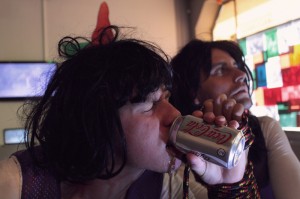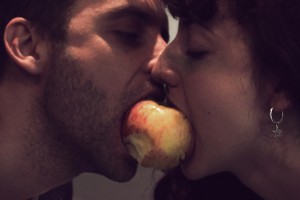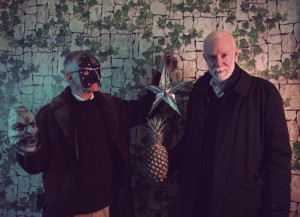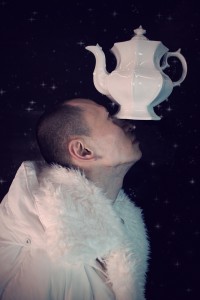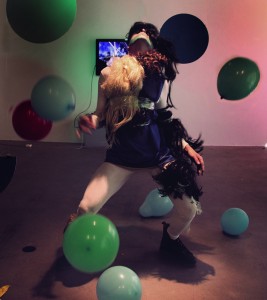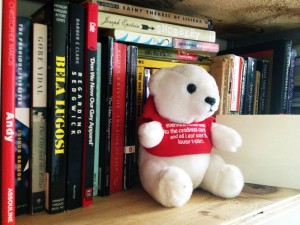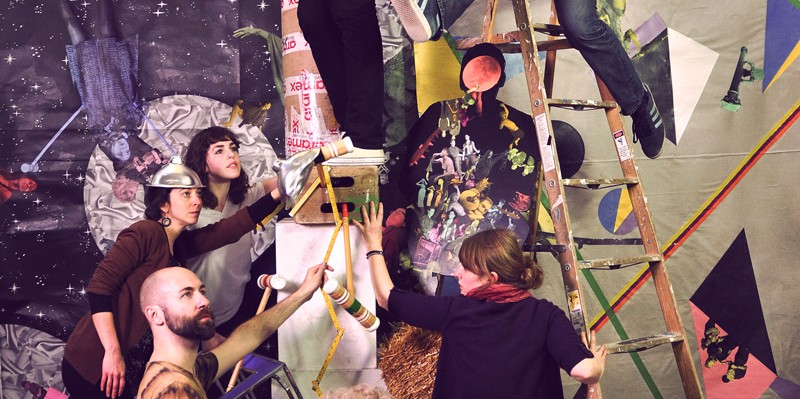
Interview with Ryan McNamara by Meaghan Kent 6.26.13
Meaghan Kent: There are some interesting distinctions between New York and other cities. You mentioned your exhibition in Rotterdam and also São Paulo?
Ryan McNamara: There are so many differences, where do you begin? In terms of the immediate experience of making something, New York privileges this constant, all-consuming productivity, so, on the surface anyway, it seems quicker and easier to get things done here. We love to brag about how busy we are, how late we worked, etc., which just reinforces this sense of urgency and self-importance.
MK: I wonder if most people intentionally create things to exceed their own level of expectations in order to test themselves. They create a bigger goal in order to find out, “okay, I can do this,” “I can’t do that,” or “how can I be able to accomplish that?”
RM: Constraints are gifts. Sometimes a project is about looking at the structure and the constraints and putting the pieces together like a puzzle. I have to figure it out. In my brain it feels like if I just put all of these constraints together in the right way, the project will be done. I like the idea that it will arrive through those constraints.
Something like “artistic freedom” with no constraints would drive me crazy. That’s more of an author way of working—creating the whole universe. For me, it’s more interesting if there’s a specific building in Rotterdam and the crowd traffic is around fifteen people a day versus Chelsea where there’s 200 people coming through who have probably been to ten galleries already. That audience mindset becomes one of the registers I’m attending to. For instance, I know in Chelsea someone will spend two minutes in an exhibition versus Rotterdam where they come for the experience and are dedicating more time.
MK: That’s an interesting concept to think about in preparing for an exhibition. Other than the space itself, you’re thinking about the time.
RM: Chelsea audiences are more likely to be checking things off the list. We all do it. It’s about getting it done. Like, “I saw that show, that show,” etc., because they’re right next to each other and that’s how the flow works. It’s a unique audience, and whenever I do something there, I tailor the project with that in mind.
MK: So you have an idea and then it becomes designed to the space itself or the project itself?
RM: Someone often proposes an opportunity and I make something for it. I have a few thoughts around the framework of, “Wouldn’t it be great if…,” and I have x, y, and z space to work in. If it’s something individual and it takes ten minutes per person or it doesn’t work if there’s constant traffic of people, then I try to account for that.
MK: You really think about the public, the viewers, and that’s something really special about your work. The outcome must really change from what you imagined it to be, so it varies a lot. In Rotterdam, for instance, were you really surprised?
RM: For the project at Showroom, MAMA, in Rotterdam (“Survey: Personal Performances”), people could either do it online or in person. You filled out a questionnaire about what kinds of “ingredients” you like in performance, and in five minutes we put something together. It worked for the space, which had two rooms, one of which was a “performance” room and the other more like a doctor’s waiting room. For people who participated online, we had a wheelchair with a camera attached that would move around the space so you could watch it livestream. It’s totally “interactive,” a bastardized word with terrible connotations, but one I also like for its ridiculousness.
I made up the parameters for this project, but didn’t specify the design of the actual questionnaire. When I showed up and saw the form, it was not at all what I was envisioning. It had a crazy Japanimation theme. These are my questions but this really isn’t my design. It’s part of setting up projects and leaving some things unknown.
MK: But you do look at it optimistically.
RM: I was shocked but it was so amazing and anti-my aesthetic; I was into it.
MK: And thinking about “Still,” the exhibition you did at Elizabeth Dee Gallery, you had so many people coming in.
RM: I can’t sit in a chair all day, so I do these long-term projects that are more interactive. With performance, unique individuals come in and add something to the project. How could you not exploit that?
MK: When I went there, I had a press person waiting behind me. And online you see all the pictures with people: big collectors, curators, and advisors. Everyone was a part of it, on the same level, and not taking things too seriously.
RM: That was important for me. I set up a structure with some very basic rules that allows for millions of opportunities. It was crucial that there was no audience; only people who participated were allowed in the gallery, so participants could perform without being watched. If people weren’t willing to participate, they couldn’t come in. We had a card that said, “Thanks so much for coming, you can experience the project online.”
MK: The Internet becomes this whole other realm, too. You’re viewing the work or becoming part of the process in your private home. That has now become a big part of your work.
RM: “Survey” opened up something new for me. I often respond to the behaviors of audience members and work with people who know how to read an audience. Performing for an online audience is like doing it blindfolded. You don’t even know if people are actually watching. They could be in the bathroom while we’re doing this.
My favorite thing about performance is that it’s this specific time with these specific people, but how does this line up with where we are now culturally, trying to stay connected at all times? This project was sort of mocking aspects of this digital existence, people getting used to customizing things. The email invitation played with this: Create whatever kind of performance you want, whenever you want. There’s a parallel shift within museums, using audience surveys as a marketing strategy. There is now a trend within marketing departments to nail down the museum’s demographics, presumably so they can better tailor the experience. In the Netherlands, museum marketing departments are developing now, and they want to know who the audience is and that’s an interesting shift. This project takes this idea further, hyperbolizes it, gathering the audience information before the work is even made. Of course, at the end of the day, it’s still my performance.
MK: Have you ever done any kind of improvisation?
RM: No. A friend of mine is into improv classes, and I thought about taking one. In theory, I thought it was a wonderful idea but there’s something about it that doesn’t sit right with me. Performance isn’t solely about entertainment, and I find the eagerness of improv to entertain a bit overbearing. That’s the thing about art: You minimize certain kinds of expectations. You know a TV show that doesn’t entertain is a bad show, but a work of art that doesn’t “entertain” can still be provocative, and in turn, be considered a “success.” Improv always anticipates a certain reaction.
MK: And there’s something about improvisation where watching it can be really uncomfortable and you sense the failure. But with art, failure is an important part of it.
RM: If everything is an experiment, there are no failures. If there is no set goal, then how can there be a failure? I would be into a brand of improv where they bore you. Not so say that I’m against art that entertains. I’m very much for it.
MK: Well then, what do you think came out of something like the project at Elizabeth Dee Gallery?
RM: For me, or for the world? There were a lot of people who weren’t accustomed to a less habitual mode of performance, and that was a challenge. I had to be really outgoing. For “Survey,” we were working so quickly, I was doing things I wouldn’t normally do in a performance because the survey dictated the parameters. So both projects pushed me out of my comfort zone.
Doing a project in Rotterdam, I had to really love the experience. I wasn’t going to sell anything; I was going because I wanted the experience. The goal is the project. Being in the moment is critical.
MK: The idea of “being in the moment” ties back into New York, which I believe is impossible to do here. You are always thinking about the next thing.
RM: I think that that’s kind of amazing. On those days when I’m performing, it’s so much work to allow myself to be completely in the moment. For Rotterdam, getting the survey to only be five minutes was so important, and there’s nothing more in the moment than that!
MK: How many did you do?
RM: We did 75 performances in five days. There is a show of the aftermath up right now; you can still view it online. The livestream is on at all times, so even though no one’s performing in the space now, you can still get a glimpse of this crazy environment of props. I wanted to make it like an installation where all the tools are here for you to do what you want with it. It’s not about just showing performance footage, but trying to find a way to create situations that are as engaging as the performances were. That’s a challenge, how to make a show that’s not, “Oh, you missed something.” I’m always trying to figure out how to do that. My background was in visual art. I started with photography and then moved toward “performance art,” whatever that is, but I never lost my interest in making things.
MK: So you still make physical work through decoupage. But that’s something you haven’t done before?
RM: That’s one thing I think is so funny: the idea that performance is ephemeral. I’ve been in so many costumes and used so many props. Sure, my body in that moment is gone, but there is a lot of residue. At a certain point the costumes become retired from performance. I still have an attachment to them, so I want to give them a new life as an object.
Decoupage is about merging the residue (the props and costumes) and the documentation, the still image. I harden them. Gravity helps it form. We use balloons to structure the works. It doesn’t feel like we’re hoarding, but instead creating an inflation of the environment.
MK: Popular culture comes into play quite a bit.
RM: I think what interests me about pop culture is that it instantly sets a tone. It’s something shared between you and the audience member—not always, but you’re far more likely to have that in common. What I also love is working with not-so-popular culture—it sounds like something you’ve heard before, but the tone is more implicit. It’s tied to what you know but you might not know, like something new yet familiar, setting the tone and the era, but you can’t put your finger on it.
MK: You’re originally from Arizona. What made you want to move here and what keeps you here?
RM: All sorts of haphazard yet specific moments. My mom told me that if I did Publishers Clearing House, I could get one magazine, and I chose Interview because it was the thickest and it was exciting in the early 1980s. I kept that subscription so I was weirdly tied to New York. There was also the documentary “Paris Is Burning.” And when I was around 9, I watched the “Club Kids” episode of Geraldo Rivera and I wanted to move to New York. Those three things really made me want to come here, but they’re not the reasons I stayed. New York is the best city to be an audience member. It’s a crucible of dance, film, art, whatever. I collaborate so much with others and the talent base of New York—there is nothing like that anywhere. So as a performer and collaborator, the city supports me.
MK: You said once in a quote from 2009, “The New York art scene is disparate geographically.” Do you think this is still true?
RM: Sure. That was a weird year for me. The next year I was in “Greater New York” at PS1, and that show made a big difference because I became a part of something with artists my own “age.” I already knew some of them personally, and we would be in each other’s works. Geographically though, we aren’t all in the same place, not like the East Village or Greenwich Village or Soho. Those times of mingling through physical proximity, of neighborhoods articulating certain kinds of contact, are mostly over.
Now you have to make it a point to see someone; it doesn’t just happen. We aren’t all at the same bar together. We don’t just hang out; we go to dinner and openings and performances. You have to say, “I want to work with you.” It’s more professional because it’s the project first. I have to say, “I am interested in this world and I have to make myself a part of it.” Knowing that I belong to this group from “Greater New York”… I don’t want to say a generation of artists because that brings up age. It’s more about a connection of ideas.
MK: How did you meet Robin Bird? There is a New York icon!
RM: I came to NY for the first time when I was 15 or 16, and I had a friend going to SVA and she showed me Robin Bird’s cable access show. At that age, sex was terrifying and she was so fun about it. She’s the queen of Fire Island. She has a house there. Pati Hertling asked me to do a benefit for the Fire Island Pines Performance series and Robin Bird came, and I was completely star struck. She was so great and friendly, and gave me her address. It was amazing.
Tags: Journal